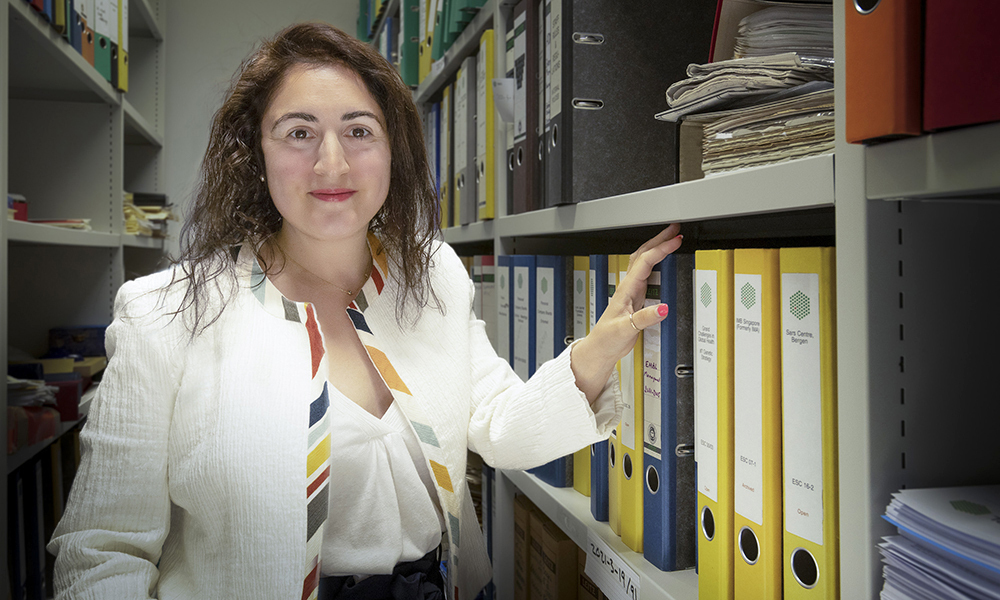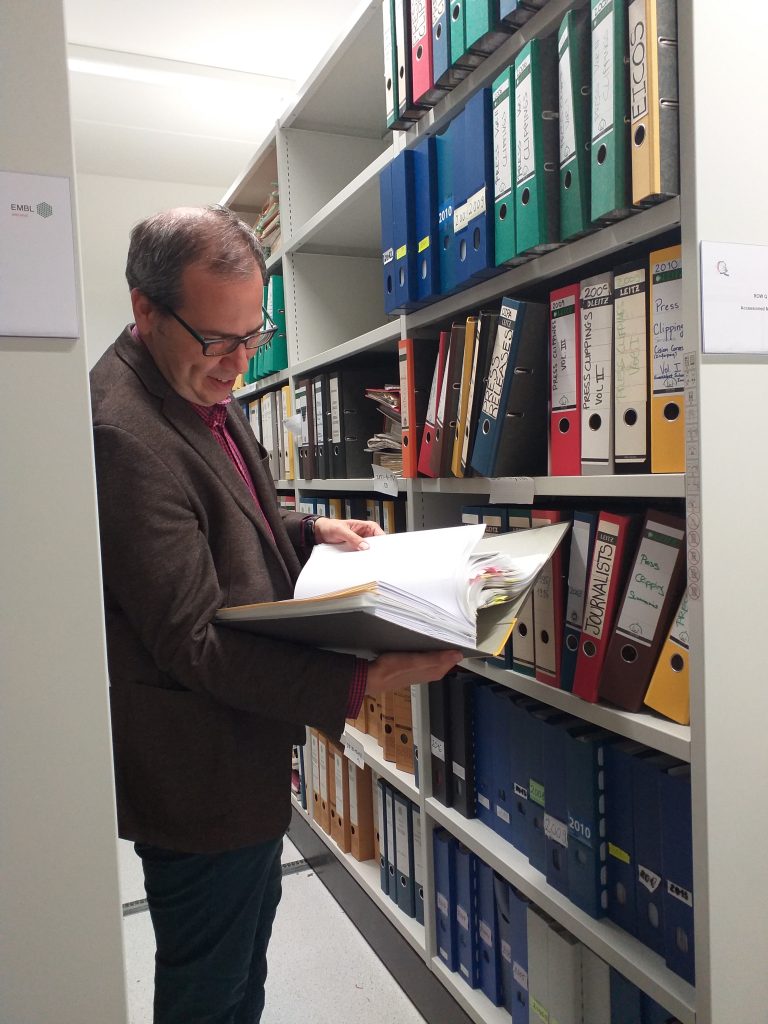Restart, Review, Rediscover

EMBL Archive and Records Management in 2022
When the new Archive and Records Manager, Maria Papanikolaou started in March, she helped with one of our first initiatives for the year, establishing our first Archives and Records Management (ARM) User Group. The ARM Users Group primary goal is to connect archives and records work with the current EMBL community needs and to coordinate all ARM projects.
The 2022 restart of EMBL Archive was an opportunity to rediscover the archival collections. We analysed our archives collection, revealing both strengths and gaps in the archival holdings. For instance, most archives are coming from the Heidelberg site and governance function (more than 50%), while other sites and functions are less represented.
EMBL staff and external researchers tapped the Archives in some interesting ways to tell stories, showing its importance as a service to EMBL staff and the broader scientific community. Prominent historians of science were interested in doing research in the Archive. We gave an online presentation to Professor Francesco Cassata from University of Genoa in Italy on how the EMBL Archives Catalogue works. We welcomed Professor Luis Campos from Rice University in Texas who did research on the context and history of the 1975 Alisomar meeting. EMBL major scientific achievements kept by the Archive have inspired scientists worldwide, such as the original drawing of the cryo-plunger designed by Alistair McDowall and Jacques Dubochetor, which has been displayed in electron microscopy facility of the Kavli Institute Nanoscience in TU Delft. EMBL staff used the Archive for verifying or to document EMBL history, such as searching the exact day of the EMBL Hamburg site foundation document or looking at architectural drawings of EMBL Heidelberg building for planning for future architectural projects.

Regarding Records Management (RM), it was a year of investigating its status according to the records management framework. We met with offices involved in RM projects in the past, such as Health and Safety, Legal, and Finance, and asked for success stories and gaps in RM implementation. We inspected physical storage places to assess short-term or historical value. With the successful collaboration between EMBL Heidelberg and Rome staff, we transferred all EMBL Rome records with historical value to the Archive. With the valuable assistance of Library colleagues and EMBL Grenoble staff, we inspected that site’s physical records as well. We worked on RM projects with the EMBL Council and the Office of Resource Development (ORD), and we observed a rising demand for records management across the organisation, especially with pan-EMBL initiatives, like data retention for EMBL-EBI and the Heidelberg Grant Office, as well as the Bioethics Academy. For the Internal Audit office, we summarised and defined the role of RM at EMBL as an important steward for the compliance, accountability, and transparency of EMBL work.